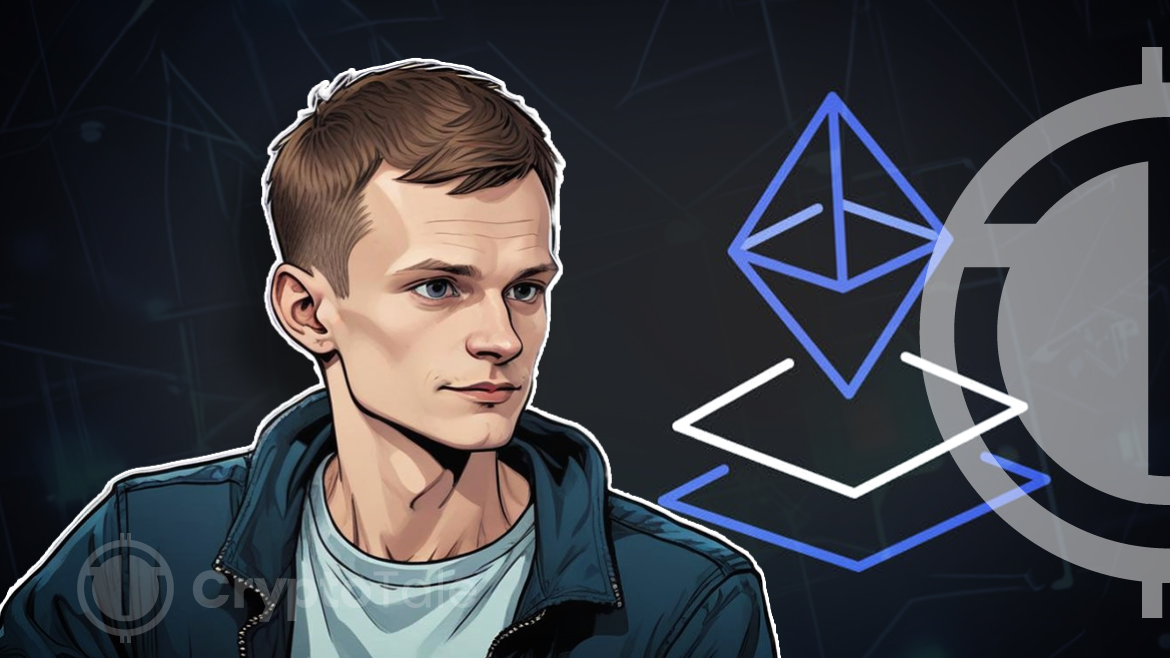
The co-founder of Ethereum, Vitalik Buterin, recently highlighted the importance of Layer 2 solutions on his blog. He described them as a cultural extension of the network. Layer 2 technologies aim to enhance scalability, reduce transaction costs, and improve overall efficiency. In this article, we will talk about why layer 2 solutions are considered cultural extensions of Ethereum.
Difference Between Layer 1 and Layer 2 Scaling
Buterin said that the fundamental difference between a layer 1-centric ecosystem and a layer 2-centric ecosystem is not technical but organizational. Instead of throwing light on the technical abilities, he focused on the real-world outcomes by talking about what will get built. He also described the inherent nature of a layer 2-centric ecosystem as pluralistic, leading to different approaches to scaling, design, and other technological features.
Two Sides of the Same Coin
In his previous blog, Buterin mentioned an important point about Ethereum being a layer 2-centric ecosystem and the freedom to build an independent sub-ecosystem with unique features. Now, he argues that Ethereum’s layer 2-centric ecosystem extends far beyond technological innovations and also applies to cultural development.
On the day after Ethereum and Ethereum Classic diverged, the two blockchains were exactly the same technologically. But they were radically different culturally, and this fact helped to shape the distinct focuses, user bases and even tech stacks that the two chains have eight years later.
How Culture Shapes Blockchain Development and Adoption?
Culture is a very important part of a blockchain, as it helps define who is attracted to the ecosystem and who is repelled. It also affects how people are motivated to do and what they can do. For instance, if a blockchain culture values privacy, community members might naturally intend to develop privacy-based technologies. On the other hand, if a blockchain community focuses on decentralization, then other community members will block and discourage any action to build a centralized mechanism.
Buterin explains a few areas where the blockchain culture has the greatest impact,
- The type of changes that can be made to the protocol, including quality, quantity, and direction.
- The blockchain’s ability to attract high-quality protocol and application developers and protocol researchers.
- The network’s ability to attract large and right kinds of users.
- Legitimacy of the blockchain in front of other communities.
Paul Dylan-Ennis’s Understanding of Ethereum Subcultures
Paul Dylan-Ennis identifies three main subcultures in Ethereum, and they are:
Cyberpunk
Cyberpunks believe in open-source software development, allowing anyone to use, modify, and distribute it. They maintain a DIY attitude and value independence and creativity. Regarding the Ethereum ecosystem, they focus on developing the foundational technologies and tools that power the network, such as protocols and smart contracts. Once the tools and other necessary infrastructure are built, they don’t dictate how these tools should be used. Instead, it follows a neutral stance, letting users decide for themselves.
In practical, cyberpunk has greatly emphasized privacy and developed technologies to protect users’ data and communications from unauthorized access. However, in the case of Ethereum, privacy is not always the top priority. For this reason, a new cyberpunk movement called Lunarpunk emerged, which focuses on restoring privacy to the top priority of the Ethereum ecosystem.
Regens
Regenerative approach is committed to building technology that rejuvenates and improves systems rather than exploiting or sustaining it. To achieve this, they focus on experimenting with various forms of governance, including testing and implementing.
They aim to use new technologies to invigorate existing institutions and improve their effectiveness. Sometimes, they directly replace outdated or ineffective institutions with new blockchain-based technologies.
Degens
Degenerates are motivated by the desire to accumulate wealth through speculation. Their main activity within the Ethereum ecosystem involves engaging in high-risk financial behavior with the hope of earning quick profits. Furthermore, they are financial nihilists, meaning they have a dismissive attitude towards traditional financial systems and values. They are more interested in the potential for large and rapid gains rather than long-term stability.
In the crypto space, degens usually go after the latest trends and are constantly looking for new opportunities that could potentially provide significant returns. They view their own activities as a way to escape the constraints of neoliberal capitalism.
The Role of Layer 2s in Cultivating Subcultures
Buterin said that for a subculture, layer 2 is the ultimate playing field for action. He claimed that layer 2s allow subcultures within the Ethereum ecosystem to develop their own unique identities. These subcultures can access resources like funding, user base, and technology, allowing them to experiment, innovate, and grow. Furthermore, layer 2 solutions can create a feedback loop where subcultures can continuously learn from their experience and adapt to be effective in real-world scenarios. Different ways in which Layer 2 can develop unique cultural characteristics include,
- More willingness to do user outreach
- Diversity of values
- Diversity of participants
The Benefits of a Layer 2 Centric Approach
The layer 2 Contric approach focuses on developing and utilizing layer 2 solutions within the ecosystems. These solutions are secondary frameworks built on top of the main Ethereum blockchain to improve the network’s scalability, efficiency, and functionality. It tries to balance pluralism and cooperation by creating a diverse set of different subcultures. This allows the development of different subcommunities within the ecosystem that share some common values and work together to ensure the principles of the Ethereum ecosystem are upheld.
A notable example of this approach is the delegated proof of stake (DPoS) system used by EOS in 2017. In this system, coin holders voted on delegates to run the blockchain, who were responsible for creating and validating blocks, and received coin rewards as compensation. Furthermore, to attract votes, delegates like EOS New York and EOS Hong Kong engaged heavily in community-building, becoming well-known brands.
However, the system proved to be unstable due to the inherent instability of coin voting and the actions of the actors who misused community funds for their own selfish goals. Although the system had its flaws, it demonstrated an impressive ability to create strong, autonomous subcommittees working for a shared goal.
When this approach works successfully, it creates healthy competition. Ethereum naturally rallies around long-standing members, which helps preserve community values but risks prioritizing social games over technical competence. This can entrench underperforming “OGs” and limit cultural renewal. However, new subcommunities can emerge with a healthy subculture culture, allowing for renewal and evolution. Success within subcommunities can lead to broader contributions, shifting legitimacy from continuity to performance. By analyzing the above story, it is easy to identify weak points like Collapse into echo chambers, Collapse into monoculture, and the vector favored by the competition is wrong.
I do not claim to have perfect answers to these; Ethereum is an ongoing experiment, and part of what excites me about the ecosystem is its willingness to tackle difficult problems head-on. Many of the challenges stem from incentive misalignments; the natural solution to that is to create better ecosystem-wide incentives for collaboration.
Conclusion
Vitalik Buterin emphasized the cultural significance of a Layer 2-centric approach in the Ethereum ecosystem. Ethereum can balance pluralism and cooperation by fostering diverse subcultures, enabling innovation and growth. This approach mitigates issues of entrenched interests and technical stagnation, promoting renewal through performance-based legitimacy. While challenges remain, such as potential echo chambers and monocultures, Buterin sees Ethereum as an ongoing experiment that thrives on tackling difficult problems.














